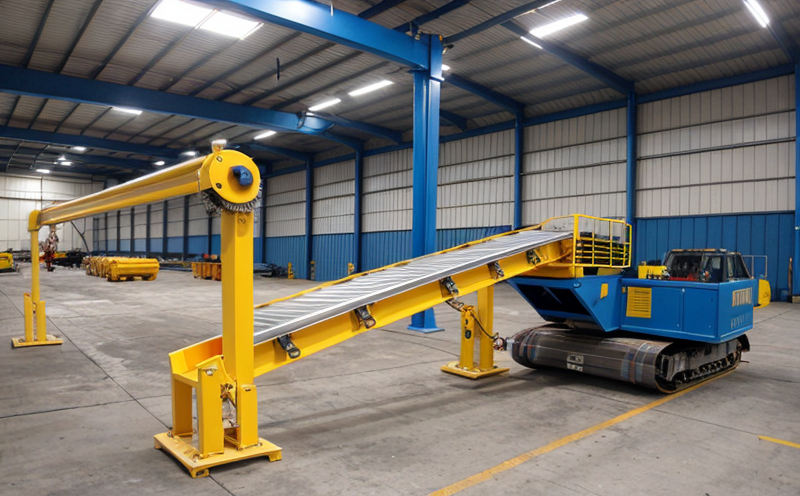BS 8438 Fire Safety Testing of Conveyor Belts in Mines
The British Standard BS 8438 is a crucial document that mandates fire safety testing for conveyor belts used in mining operations. This standard ensures the integrity and reliability of materials employed in critical infrastructure where fire incidents can have severe consequences. Mining environments are inherently hazardous, with extensive use of conveyor belts to transport raw materials from extraction sites to processing facilities. The BS 8438 tests ensure that these belts do not contribute to the spread of fire or release toxic smoke when exposed to high temperatures.
The testing process involves subjecting samples of conveyor belt materials to controlled flame exposure in a specialized apparatus. This apparatus simulates real-world conditions where fire might occur, allowing for the evaluation of various properties such as heat resistance, flame retardancy, and smoke generation. Compliance with this standard is essential not only for ensuring safety but also for meeting regulatory requirements set by mining authorities.
The BS 8438 test procedure typically includes several stages aimed at assessing different aspects of conveyor belt performance under fire conditions. These tests are designed to mimic the most severe scenarios that could be encountered in a mine setting, thereby providing robust evidence of the materials’ suitability for use. The first stage focuses on evaluating the ignition resistance of the material by determining its minimum ignition temperature and flame spread rate. Subsequent stages delve into the analysis of smoke toxicity and the chemical composition of gases released during combustion.
For quality managers and compliance officers, understanding these testing protocols is vital for ensuring that all materials used in mining operations meet stringent safety standards. This knowledge helps in making informed decisions regarding procurement and production processes, ultimately contributing to a safer work environment. R&D engineers can leverage this information to innovate new fire-resistant materials or improve existing ones, enhancing overall product performance.
In the realm of conveyor belt testing, BS 8438 provides clear guidelines that are universally accepted within the mining sector. Compliance with these standards not only enhances safety but also demonstrates a commitment to best practices among stakeholders. By adhering to this standard, companies can build trust and credibility in their operations, which is essential for maintaining good standing with regulatory bodies and customers alike.
Furthermore, the implementation of BS 8438 testing ensures that mining facilities are prepared for emergencies, reducing potential risks associated with fires. This proactive approach contributes significantly to minimizing disruptions caused by incidents within the mine infrastructure. The standard also fosters a culture of continuous improvement by encouraging regular reviews and updates based on current research and technological advancements.
It is important to note that while BS 8438 primarily targets conveyor belts, its principles extend beyond just these components into other aspects of mining operations where fire hazards are present. By adopting this standard across various equipment types, mines can create a more comprehensive safety framework capable of addressing multiple risks simultaneously.
In summary, implementing BS 8438 for fire safety testing of conveyor belts in mines is not merely a compliance exercise; it represents a commitment to excellence and sustainability in mining operations. Through rigorous testing procedures aligned with international standards, companies can ensure their facilities are equipped to handle potential fires effectively while promoting safer working conditions.
Benefits
- Enhanced Safety: Ensures that conveyor belts meet rigorous fire safety standards, reducing the risk of catastrophic fires in mining operations.
- Informed Decision-Making: Provides clear data on material performance under extreme conditions, aiding quality managers and R&D engineers in selecting appropriate materials.
- Regulatory Compliance: Helps companies comply with industry regulations regarding fire safety, avoiding potential fines or operational disruptions.
- Increased Trust: Demonstrates a commitment to best practices, enhancing credibility among stakeholders including employees, investors, and customers.





